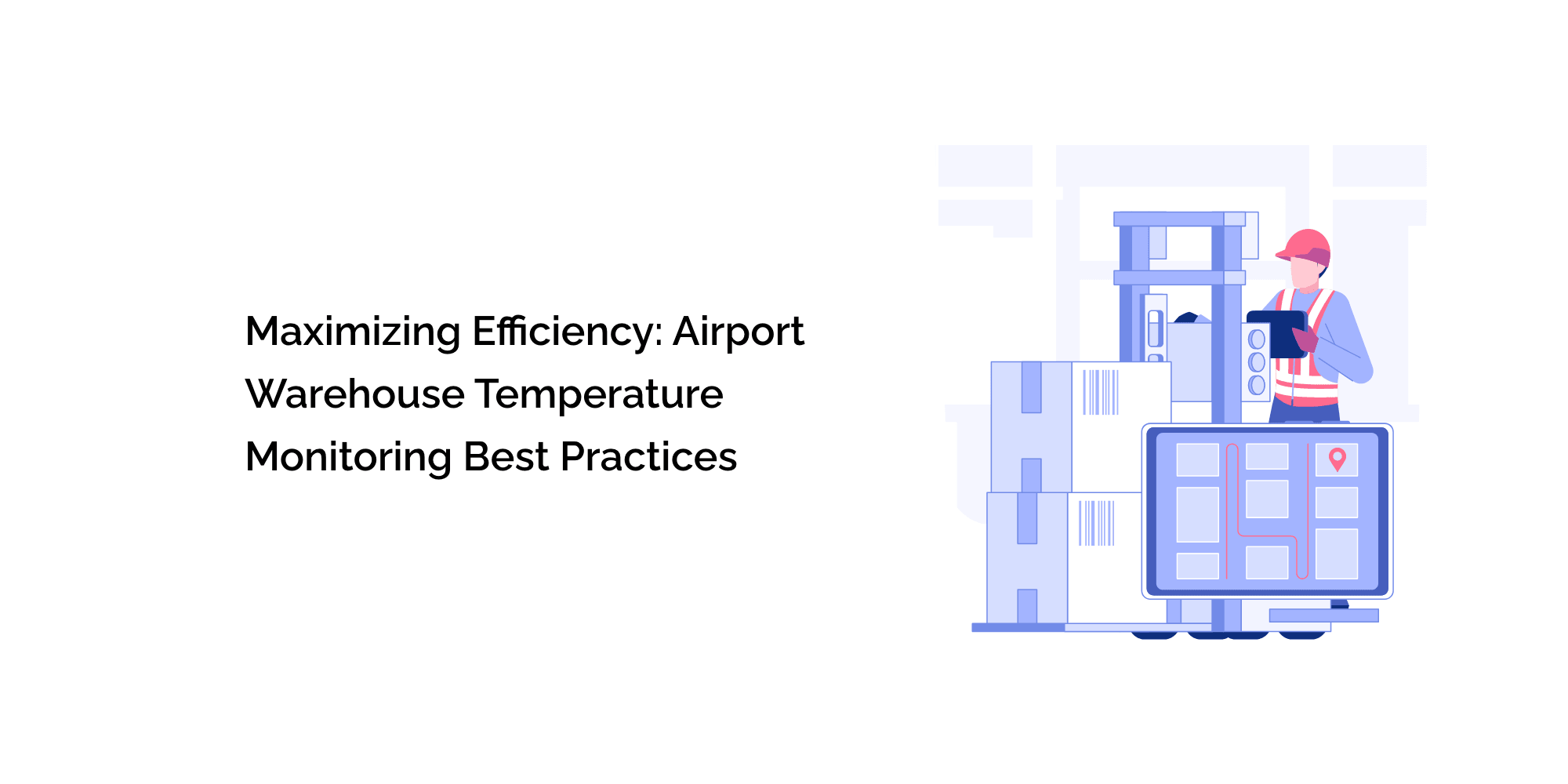Temperature-sensitive goods, such as pharmaceuticals, perishable foods, and electronics, are frequently transported through airports worldwide. These goods require strict temperature control to maintain their integrity and ensure they reach their destination in optimal condition. The airport warehouse serves as a critical hub for handling and storing these goods before they are loaded onto aircraft.
Efficient temperature monitoring in airport warehouses is essential to safeguard the quality and safety of temperature-sensitive cargo. In this blog, we will explore the best practices for maximizing efficiency in temperature monitoring systems within airport warehouses.
Importance of Temperature Monitoring in Airport Warehouses
Temperature fluctuations can have devastating effects on temperature-sensitive cargo. When stored in inappropriate conditions, pharmaceuticals may lose their efficacy, perishable foods may spoil, and electronics may experience malfunctions. Therefore, maintaining the proper temperature range throughout the entire logistics process is crucial.
The airport warehouse plays a pivotal role in temperature-sensitive cargo management, making it vital to implement robust temperature monitoring practices to uphold cargo quality, adhere to industry regulations, and prevent financial losses due to damaged goods.
Automated Temperature Monitoring Systems
Traditional manual temperature monitoring methods are not only labor-intensive but also prone to human error. Implementing automated temperature monitoring systems significantly enhances efficiency and accuracy. These systems employ sensors and software to continuously monitor and log temperature data at regular intervals.
a. Sensor Placement:
Strategically place temperature sensors throughout the warehouse to cover all storage areas. Focus on locations where temperature fluctuations are more likely to occur, such as near doors, windows, ventilation systems, and areas exposed to direct sunlight.
b. Real-time Alerts:
Set up real-time alerts to notify warehouse staff and management immediately when the temperature deviates from the specified range. Quick responses can prevent potential cargo damage and ensure timely corrective actions.
c. Data Logging and Analysis:
Automated systems collect and store temperature data over time. This historical data can be analyzed to identify trends, assess performance, and optimize warehouse temperature management.
Redundancy and Backup Systems
Reliability is paramount in temperature monitoring, especially when dealing with valuable cargo. Redundancy and backup systems should be in place to ensure continuous monitoring even during power outages or system failures.
a. Dual Sensors:
Install redundant temperature sensors to cross-verify readings and detect any discrepancies between sensors.
b. Backup Power:
Equip temperature monitoring systems with backup power sources, such as batteries or generators, to ensure functionality during power disruptions.
c. Data Storage Redundancy:
Duplicate temperature data storage on multiple servers or cloud platforms to safeguard against data loss.
Integration with Warehouse Management Systems (WMS)
Seamless integration of temperature monitoring systems with the Warehouse Management System (WMS) can streamline operations and data management.
a. Inventory Tracking:
Connect temperature data to specific shipments and products in the WMS. This integration allows for real-time tracking of cargo temperature from arrival to departure, ensuring compliance with temperature requirements.
b. Process Automation:
Integrate temperature data into automated processes within the warehouse, such as triggering cooling systems when temperatures rise above thresholds or automatically generating temperature reports for regulatory compliance.
Remote Monitoring and Control
In a fast-paced airport environment, warehouse staff may not always be physically present to monitor temperature conditions. Remote monitoring and control capabilities offer flexibility and enable timely interventions from anywhere.
a. Mobile Applications:
Develop mobile applications that provide real-time temperature updates and allow staff to adjust temperature settings remotely.
b. Cloud-based Solutions:
Implement cloud-based temperature monitoring systems that can be accessed from any internet-connected device, ensuring real-time visibility even when off-site.
Calibration and Maintenance
Accurate temperature monitoring relies on well-calibrated sensors and regularly maintained equipment. Neglecting calibration and maintenance can lead to inaccuracies and compromise the integrity of the cargo.
a. Calibration Schedule:
Establish a regular calibration schedule for all temperature sensors and monitoring equipment to ensure their accuracy.
b. Maintenance Protocols:
Create a maintenance plan for temperature monitoring systems, including routine checks, cleaning, and replacements when necessary.
Training and Education
Ensuring that warehouse staff are well-trained in temperature monitoring best practices is essential for a successful implementation.
a. Training Programs:
Conduct comprehensive training programs to educate warehouse staff on the importance of temperature monitoring, the use of monitoring systems, and proper response protocols.
b. Continuous Education:
Organize regular workshops and refresher courses to keep employees up-to-date with the latest technologies and practices.
Conclusion
Efficient temperature monitoring is crucial for the proper handling and storage of temperature-sensitive cargo in airport warehouses. Implementing automated monitoring systems, integrating with the Warehouse Management System, ensuring redundancy and backups, and providing remote monitoring capabilities are all vital best practices. Calibration, maintenance, and ongoing training are equally essential in maintaining a high standard of temperature control.
By adopting these best practices, airport warehouses can maximize efficiency, reduce cargo damage, comply with industry regulations, and enhance their reputation as reliable logistics partners for temperature-sensitive goods. Ultimately, the proper temperature monitoring approach is a vital component of successful airport warehouse operations in the ever-evolving world of global commerce.








